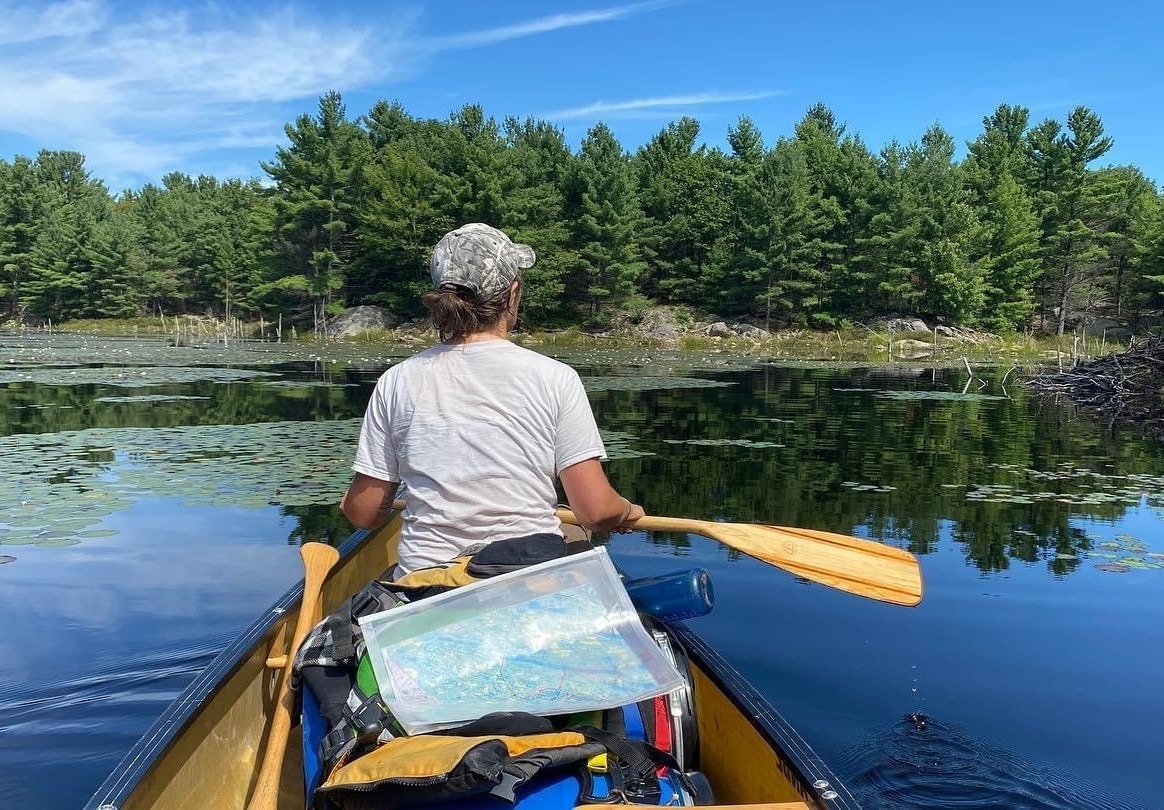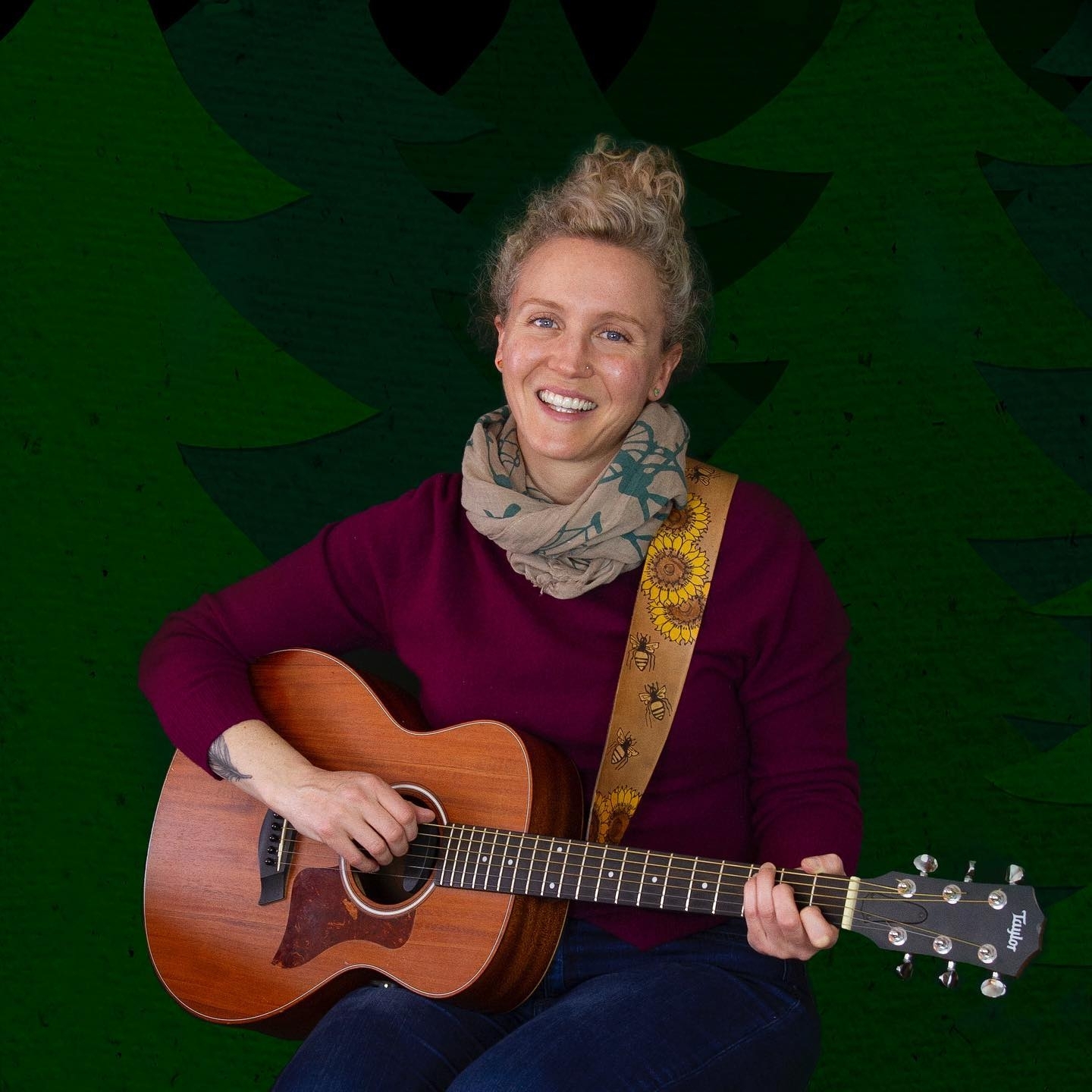How to protect nature in Muskoka when there are governments promoting ‘environmental stewardship’ while approving ‘shoreline-altering developments’.
By Bet Smith.

After a long, hard winter rife with emergency-level weather events, spring has finally come. Birdsong fills the air, leaves and blossoms emerge from winter’s barren branches, and we are reassured that all is not lost.
Enter the throngs of tourists, the traffic, the chaos of cottage country.
Sometimes it feels like Muskoka is partway through a transformation from awe-inspiring, biodiverse wonder to nature-themed amusement park. As I paddle along Muskoka’s shorelines, I want to count turtles and frogs and spot loons and songbirds, but my creature sightings are outnumbered by giant neon polyethylene float toys and motorized personal watercraft bobbing on the waves.
The display of modern consumerist values can throw me into a funk. Aside from writing a bitter article to vent my frustrations, what can I do? Muskoka, a community whose economy relies on an extraordinary natural environment, is surely invested in sustaining that environment. Right? I feel powerless as policymakers fail to protect the land and water.
I hear governments promoting environmental stewardship, then I see large shoreline-altering developments being approved and constructed. Several thriving sectors within our local economy seem to me to be built on environmental exploitation. The short-sighted assumption is that sustaining the environment is someone else’s responsibility.
Despite the passing of the buck, I think it’s widely felt that somebody has to do something.
Muskoka Watershed Council has been discussing something called Integrated Watershed Management (that’s a mouthful). It’s a beefy title that I think means: “communities coming together collaboratively to take care of a large swath of land, over and through which water flows toward a unified outlet.” All sins perpetrated on the land are evident where the water runs off. When we take care of the land, it is a sponge — a filter — that absorbs and digests some of our bad habits. But when we overburden it — pave it, dig it, contaminate it — we destroy the filter. As a consequence, all of our evils — our road salt, detergents, fertilizers, gasoline, antifreeze — poison the fish.
Integrated Watershed Management means recognizing that every individual action, positive or negative, within each bit of the watershed — be it one small plot of wooded land, one little wetland or small lake within that watershed — contributes to (and represents) the way we’re caring for the watershed as a whole. It involves a multi-level agreement between governments and communities to listen to the science, reach an informed consensus, and act accordingly. We’ve got to agree to adjust harmful patterns of human consumption, development, recreation, and general behaviour so that our part of the planet can not only flourish for nature’s sake, but can continue to nourish and protect us. We can enjoy our forests and waterways through gentle forms of recreation.
So, how can each of us take part in IWM? It can be hard to find the time and energy for environmental advocacy. Sometimes the weight of a million other urgent problems leaves no bandwidth for organized activism. How do you write letters to politicians when you’re in crisis mode? How do you rally when you have to go to work? How do you push for IWM when you’re wrangling small children?
At these times, disorganized activism may be the answer. We should find ways to nurture our animal souls through small acts of environmentalism. Write poetry about our love for the Earth. Gather our friends for brunch, a laugh and a roadside cleanup. Ride our bikes as an act of rebellion. Become outspoken snobs against fast fashion. Grow our own food and stick it to the man. Care for the planet out in public. Feel our feelings out loud. Risk seeming odd to help reshape our culture. Most importantly, find time to be in nature — in stillness or in motion, in community or in solitude — bask in it, soak it in. Nature is ours, and we belong to nature.

This is article #23 in the article series, First Steps on the Path to IWM, from the Muskoka Watershed Council. Its author is Bet Smith, a member of MWC, as well as a passive house builder, blacksmith, and songwriter often caught talking to squirrels, who grew up mostly in Muskoka. The series is edited by Dr. Peter Sale.
The article was originally published on MuskokaRegion.com on May 24, 2025.
